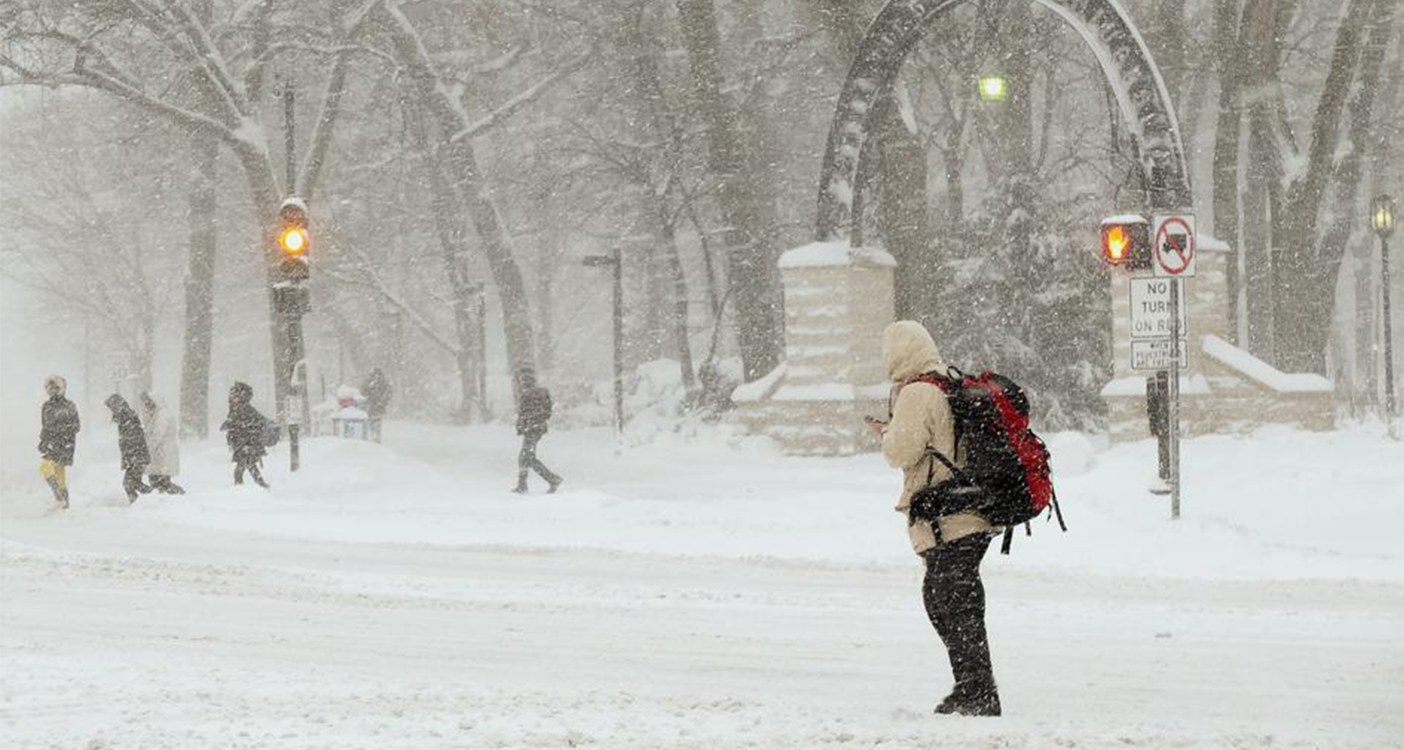Preparing for WinterAs we approach another winter season at Northwestern, you should be aware of the many hazards associated with winter weather conditions. Low temperatures can cause injuries, and snow and ice can cause hazardous walking, working, and driving conditions, which may result in accidents. Taking special precautions in the winter months will ensure your safety and the safety of your colleagues.
Cold-related injuries
Cold working environments (e.g., outdoors, poorly insulated areas) can reduce skin and body temperatures, which can lead to injuries such as:
- Frostbite: Redness and pain in the skin, followed by white or grayish-yellow skin, unusually firm or waxy skin, and numbness
- Hypothermia: Shivering and exhaustion, confusion and fumbling hands, memory loss, slurred speech, and drowsiness
- Trench foot: Caused by prolonged exposure to wet and cold conditions and can result in reddening skin, tingling/numbness, pain, swelling, cramps, and blisters
Wind chill
The wind chill is the temperature your body feels based on the rate of heat loss from exposed skin caused by the effects of wind and cold. It is important to understand the effect wind has when paired with cold temperatures, as it can be life-threatening. For example, when the air temperature is 0°F, and the wind speed is 15mph, the wind chill temperature falls to -19°F. At this temperature, exposed skin can freeze in 30 minutes! Refer to the National Weather Service (NWS) Wind Chill Chart to learn more.
Get trained
If your job requires working in cold environments, ensure you are up-to-date on your annual Cold Stress in the Workplace training in myHR Learn. |


